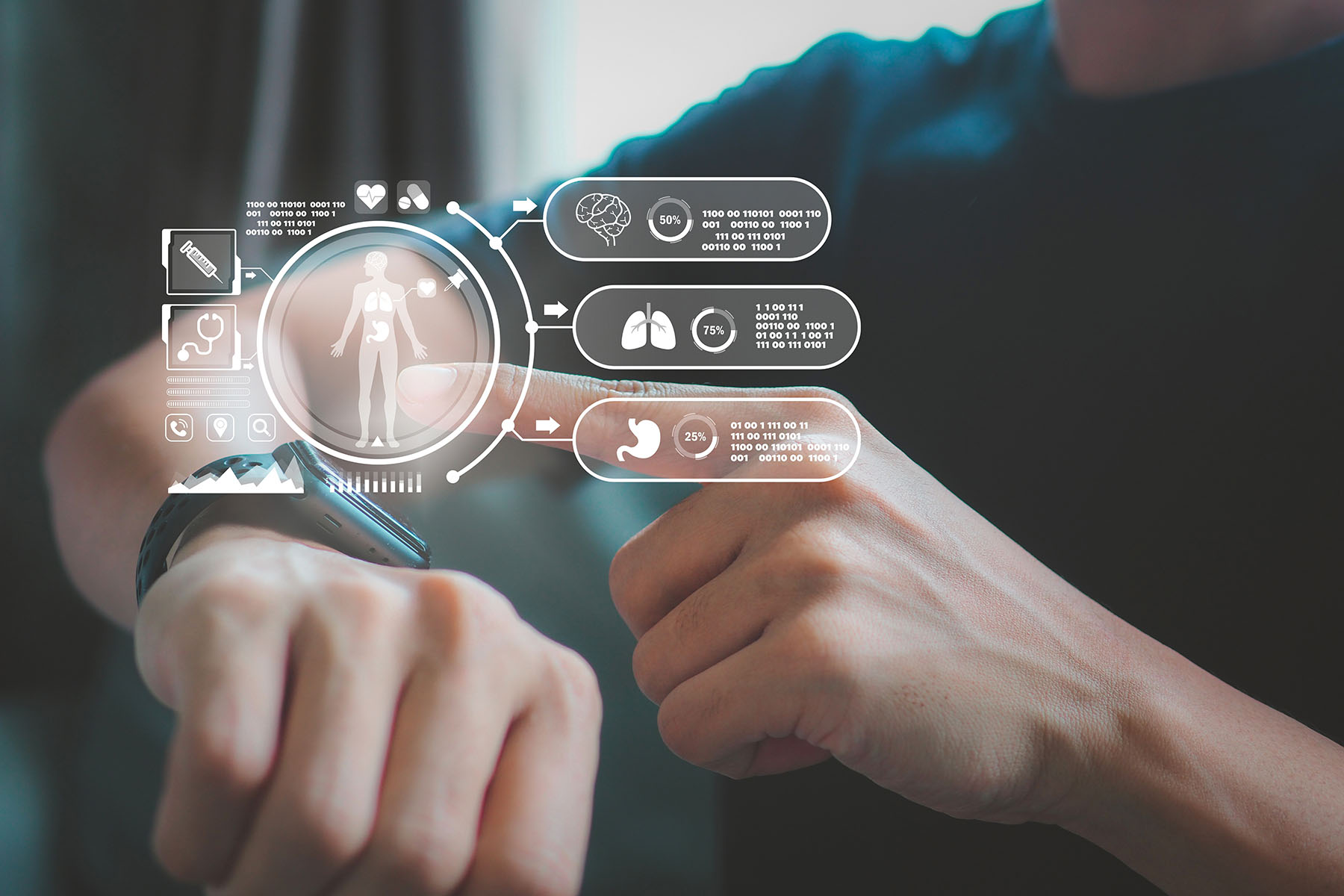The healthcare industry has been transformed by the COVID-19 pandemic, and the diagnostic market is no exception. As the world continues to grapple with the fallout from the pandemic, there is a growing recognition of the important role that diagnostics can have in controlling the spread of infectious disease and improving overall health outcomes. This has led to significant changes in the healthcare diagnostics market and has created new opportunities and challenges for pharma executives.
The Role of the COVID-19 Pandemic on the Diagnostics Market Landscape
Diagnostic testing has always been seen as a valuable tool for healthcare providers (HCPs) to accurately diagnose illness and ensure that patients receive necessary medical care. Before the COVID-19 pandemic, diagnostic testing procedures involved patients visiting HCPs—namely their physician or nurse practitioner—for sample collection. Samples were sent to the laboratory for testing and several days later results were communicated to the HCP who would review them and recommend further treatment based on their diagnosis. This process often proved lengthy and may have led to delays in care for an individual, but there was no perceived need for mass change.
The COVID-19 pandemic, however, changed all of that. COVID-19 magnified the inefficiencies in the current diagnostic testing “standard” and highlighted the need for rapid, accurate, and accessible diagnostic tests. It also led to increased investment in diagnostic technologies and the development of new tests that did not require the time and cost inherent with standard molecular tests. The rapid COVID-19 antigen tests were simply designed, easy to administer, and facilitated point-of-care use.
This meant that patients could be tested in a physician’s office, community testing facility, or at home within minutes which expedited decision-making regarding patient care. Because of their rapid turnaround time and cost effectiveness, rapid antigen tests could be used for large-scale screening and surveillance efforts the likes of which had never been needed before. These efforts helped identify infected individuals promptly, allowing them to isolate and so limit the spread of infection within a workplace, school, or community.
The rapid COVID-19 antigen test and the impact that it had in helping address worldwide chaos served as a catalyst for even more significant changes in attitudes towards at-home healthcare and routine disease screening. The pandemic highlighted the importance of preventative healthcare and the early detection of disease. Now people are more aware and accepting of the need for routine screening and proactive health monitoring. This has led to an explosion in the market for at-home diagnostic tests, wearable health devices, and self-monitoring tools that enable individuals to track their health metrics regularly.
Expectations and Opportunities for the At-home Diagnostic Testing Market
According to the CDC, 70% of today’s medical decisions depend on laboratory test results.1 But when COVID-19 closed physician offices—or severely limited patients’ abilities to come in for testing—companies such as Quest Diagnostics, Labcorp, Everlywell, and LetsGetChecked were able to step in to offer solutions. Now patients can get a wide variety of at-home tests including those for allergies, colon cancer, HIV, Lyme disease, and sleep apnea delivered directly to their door. “We are at a critical juncture in the healthcare industry, and modern, accessible solutions rooted in diagnostics are essential for driving better health outcomes for all,” said Julia Cheek, CEO and Founder of Everlywell.2
Patients are the ones reaping the benefits of peace of mind—and early diagnosis. When Christine Bronstein, a 48-year-old woman from Hawaii, saw blood in her stool, she took a colon cancer screening test from LetsGetChecked. It came back positive. While her primary care physician wrote her concern off, Christine chose to undergo a colonoscopy which revealed that she had Stage 3 cancer and a nearly two-inch tumor in her rectum.3 At-home tests are helping detect possible health conditions sometimes even prior to symptom presentation, enabling patients to get earlier treatment and lowering the risk of later complications.
The market for at-home diagnostic testing is only expected to increase as more and different types of tests become available and additional competitors enter the market and drive down the direct-to-consumer cost. According to Cathy Doherty, Quest Diagnostic’s Senior Vice President for Clinical Franchises and Marketing, the at-home diagnostic testing market is, “positioned for breakout growth, and we estimate it to be about a $2 billion market by 2025.”4
The rise of the at-home diagnostic test provides both opportunities and challenges for today’s pharmaceutical marketer. At-home diagnostic tests allow pharmaceutical marketers to target specific patient populations with precision. By understanding the conditions or diseases being tested at home, marketers can tailor direct-to-consumer (DTC) messaging and promotional efforts accordingly. While at-home diagnostic tests may empower patients, confirmatory diagnosis and treatment recommendations require collaboration with an HCP. Even though pharmaceutical marketers typically build relationships and partnerships with HCPs to ensure seamless integration and support for tests and related treatment, they may be missing an opportunity to engage the HCPs if patients are utilizing a third-party telehealth platform to confirm a diagnosis and/or build out a treatment plan.
Expectations and Opportunities for Wearable Health Devices and Monitoring Tools
The at-home diagnostic market isn’t the only one poised to grow significantly in the post-COVID era. According to a report by Grand View Research, the global wearable medical device market, which was valued at $21.3 billion in 2021, is expected to grow at an annual rate of 28.1% through 2030.4 Some of this growth may be due to the COVID-19 pandemic, but more likely it will be driven by the projected increase in lifestyle-related disorders such as diabetes and hypertension.
Wearable health devices can provide several advantages to the end user including early risk identification, improved disease management, and lower healthcare costs. Wearable health devices also provide consumers with the ability to monitor conditions that require frequent changes in treatment, such as glucose testing to monitor blood sugar levels. The data from these devices can help facilitate those treatment changes like the prescription required for a continuous glucose monitor for consumers. The results can provide consumers with better insights into how certain foods and activities can impact their health metrics and aid in better decision-making.
Wearable health devices are not a replacement for a HCP’s opinion, but they can serve as a valuable input to diagnosis. During a panel discussion I attended at the March 2023 American College of Cardiology Conference, a group of electrophysiologists discussed the potential benefits and limitations of the Apple Watch’s AFib diagnosis feature. The Apple Watch can detect AFib, a common cardiac arrhythmia, by analyzing the user’s heart rate and rhythm data.
The electrophysiologists on the panel agreed that the Apple Watch could be a useful tool for flagging potential AFib in patients who may not be aware they have the condition. But they were also excited about the application’s ability to monitor a patient at-home who had already been diagnosed and treated for AFib. The panel felt that there was value in receiving the post-ablation dataset to confirm that the patient was continuing to remain arrhythmia-free. They also noted that the device has limitations, such as false positives and false negatives, and that it should not replace traditional diagnostic methods.
Pharmaceutical marketers looking to take advantages of the opportunities this market provides might consider the following;
- Increasing their investment in wearable medical device research and development.
- Partnering with the device and/or application makers to identify opportunities for collaboration.
- Tailoring promotional messaging based on application insights.
- Developing new wearable devices or applications that could be used to deliver related healthcare services such as medication reminders and telehealth consultations.
In Conclusion
Pharmaceutical marketers need to recognize the role that point-of-care diagnostics and wearable health and health monitoring tools can play in the healthcare market. Those who have diagnostic expertise should look to focus expansion efforts with investment in product innovation and technology improvements. And those more focused on prescription treatments should look to leverage digital health platforms to integrate their products and services with the wearable health and health monitoring systems allowing for more personalized and data-driven care.
In addition, the diagnostics market’s growth and evolution in the post-pandemic era present opportunities for marketers to develop new strategies and partnerships to reach patients and HCPs effectively. By leveraging emerging technologies and focusing on preventive care, marketers can play a vital role in improving healthcare outcomes nationwide.
References:
1. https://www.cdc.gov/csels/dls/strengthening-clinical-labs.html.
2. https://www.cnbc.com/2022/02/03/at-home-testing-from-covid-to-cancer-worth-2-billion-dollars.html.
3. https://www.insider.com/doctor-dismissed-womans-home-cancer-test-but-tumor-was-real-2022-4.
4. https://www.grandviewresearch.com/industry-analysis/wearable-medical-devices-market.









